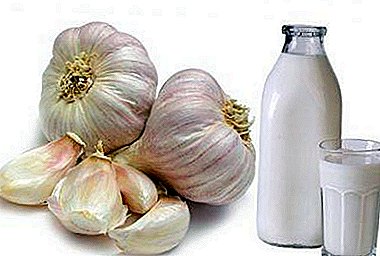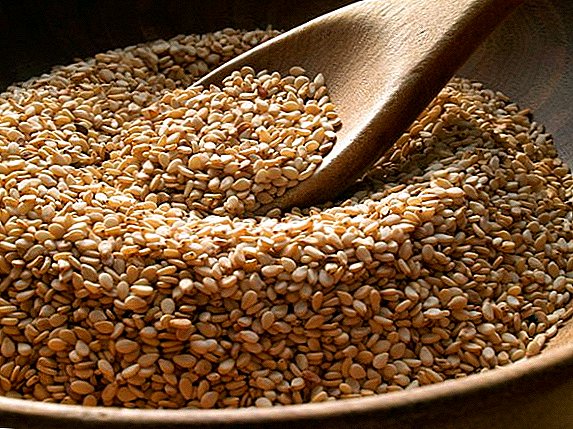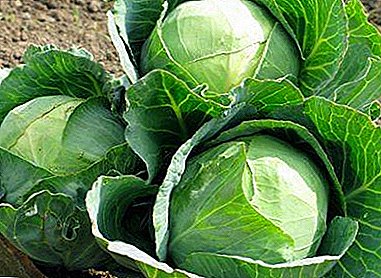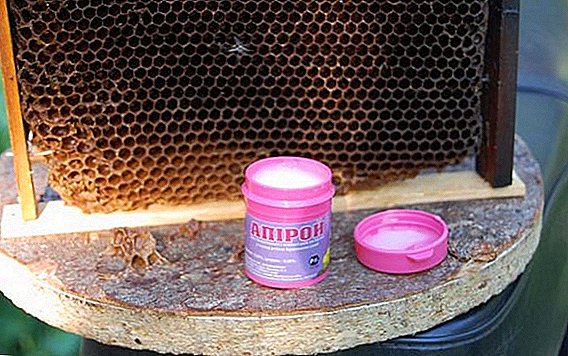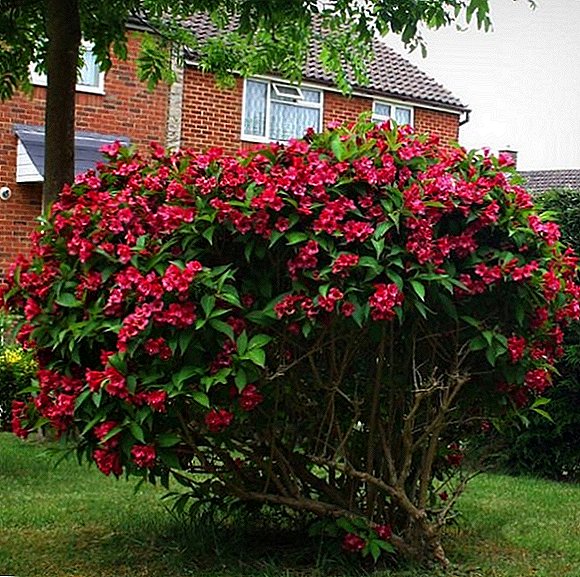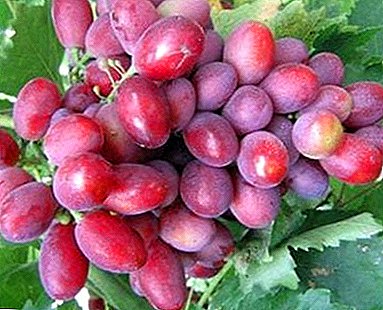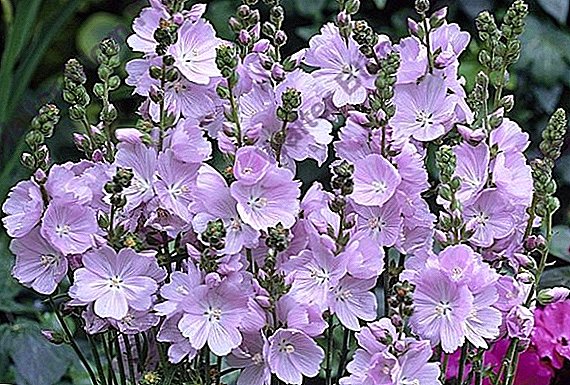 Choosing plants for the garden, many are faced with difficulties, since the assortment of flowers presented on the shelves is huge.
Choosing plants for the garden, many are faced with difficulties, since the assortment of flowers presented on the shelves is huge.
In this article we will tell you about the long-term sedentzee, which will be a wonderful decoration of your flower beds.
Botanical description
Zidalcea belongs to the Malvaceae family.
The Malvaceae family also includes such plants as Chinese hibiscus, castor bean, okra, Syrian hibiscus, stockrose, abutilon, Althaea medicinal.This is a perennial herb that has upright stems and rounded leaves. It has powerful, but not deep roots.

Differs in the presence of spike inflorescences, large flowers. There are plants of different colors: red, pink, white, crimson. Sometimes there are sockets with oval leaves. The genus includes about 30 species.
Important! It should be used for planting fully ripened seeds, a characteristic sign of "ripening" is staining of the seed box in brown.Plant height on average does not exceed 1 meter. The birthplace of the flower is considered to be North America, from where it has spread throughout the world.
Sorta
We offer you a description of the most popular varieties of perennial sylda.
- "Little Princess". For planting this variety, it is necessary to choose a rich, wet, loose soil. The height of the flower averages about 40 cm. Flowering lasts throughout the summer. It has a straight branched stem and separate leaves, which form a rosette. It has a powerful basal system. The flowers have a delicate pink shade, their size is 2-8 cm. This variety should be planted in sunny areas. Cold tolerates well, but it is recommended to carry out mulching.

- "Diamond". Planted this variety should be in a wet and loose soil. The height of the plant can reach 70 cm. It blooms "Brilliant" all summer months. It has a straight branched stem and separate leaves. The color of the flowers is carmine red. Prefers sunny areas, tolerates frost well.

- "Party Girl". The height of plants of this variety is from 75 to 100 cm. The flowers are painted in carmine-pink color, have a diameter of 5 cm. Flowering begins in July and ends in mid-September. The variety is able to withstand temperatures down to -35 ° C.

- "Croffway Red". The variety differs from its counterparts in a rather large height - up to 95 cm and in a dark red color of flowers. The flowering period occurs in the summer months. Like many representatives of cidaltia, the variety is frost resistant.

- "William Smith". Plants of this variety have a height of about 90 cm. Their inflorescences are painted in a bright pink color with a salmon shade. The diameter of the flowers is about 3 cm. For planting it is better to choose a sunny place, it is recommended to carry out mulching before winter, despite the fact that the variety has good winter hardiness.

- "Sidalcea candida". Representatives of this variety grow to a height of 80 cm. They differ from their fellows by the presence of pure white small flowers with a diameter of about 2 cm. Inside the flower there is a cream heart that gives the plant a delicate appearance. He tolerates frost well, loves sunlight.

Content characteristic
In order for the side to grow healthy and have a beautiful appearance, it is necessary to know some features of its content.
Did you know? In America, the plant variety "Sidalcea candida" is considered an obligatory attribute at weddings, since, according to belief, it is the snow-white color of this delicate flower that promises the newlyweds a bright and long joint path.
It is better to plant the sedentzey in the light garden soil, while it is worthwhile to remove the roots of weeds, garbage, loosen the soil well.
Perennial herbaceous plants also include such as geykher, ornamental bow, digitalis, starlet lanceolate, autumn crocus, pinprick, lithnis, bells.Choose to land sunny areas with a little shadow, as it will adversely affect the number of flowers and leaves, reducing their number. But sitting on a sunny plot, a flower will delight you with rich buds.
 Siedcelia does not like drought, therefore it is necessary to water it regularly and apply complex fertilizers.
Siedcelia does not like drought, therefore it is necessary to water it regularly and apply complex fertilizers.As a complex fertilizer use such as "Tsitovit", "Master", "Sudarushka", "Mortar", "Crystal", "Kemira".To achieve maximum flowering, it is necessary to water the shrub 3 times a week.
For watering young plants suitable only warm water. In addition to fertilizers, it is recommended to weed the land regularly, as a result of which the soil will be saturated with oxygen and prevent the processes of decay.
The shrub has resistance to many pests and diseases, so the treatment can not be carried out.
Next to the side can be planted bells, cuff, jerk, it will get along perfectly with other plants that love sunlight.
Application in landscape design
Zedatseya is actively used to create landscape compositions, it will be a wonderful decoration of any celebration.  Most often in the design of the landscape used varieties such as "Rosie Jam" and "Brilliant".
Most often in the design of the landscape used varieties such as "Rosie Jam" and "Brilliant".
Due to the fact that the shrub gets on well with other flowers, you can build a rather unusual, bright, sunny composition that will decorate your garden.
Bubble, karyopteris, irgu, silver goof, forsythia, heather, and common myrtle are also classified as shrubs.
Landing side
It is necessary to sow the seeds of a plant in spring, when the indicator of average air temperature is more than +10 ° С. The soil should be moist, well-loosened. The depth of the fossa should be 2-3.5 cm.
After sowing is completed, the bed is compacted and watered with warm water. The first shoots may appear within 2-3 weeks. If seedlings are too often arranged, it is recommended to thin them so that the distance between the flowers is at least 15 cm. 
Important! Rarely, but it still happens that the dead man begins to suffer from rust. To prevent this, it is sometimes necessary to feed the flower with preparations that contain potassium and phosphorus.As soon as 4 leaves appear on the plant, it is necessary to thin the sprouts again, and the distance between them should already be 40-75 cm. Sprouts that have been removed can be planted elsewhere.
Plant Care
It is very important to ensure that the soil does not dry out. For this it is necessary to carry out mulching with the help of humus, also mowed grass will do.
The root of the plant has good resistance to low temperatures, so it is not worth piling up shelters for the winter.  Only in the northern regions in the presence of severe winters is it recommended to cover the root system with fallen leaves and sprigs. The plant is able to withstand temperatures down to -30 ° C.
Only in the northern regions in the presence of severe winters is it recommended to cover the root system with fallen leaves and sprigs. The plant is able to withstand temperatures down to -30 ° C.
It is recommended to feed a flower 2 times a season: before flowering and after its completion. In the winter it is worth cutting the stalks, and replanting the plant 2 times a year completely.
Breeding
The plant propagates in two ways: seeds and basal processes. Consider them in more detail.
- Seeds. For sowing seeds, you must choose a permanent place in the open ground. Perform this event, when the average air temperature will be at least +10 ° C. It is with this indicator that the seeds will germinate quickly, and the plant will grow well. Before starting sowing, the soil is moistened and loosened.
 The first shoots sprout in about 2 weeks. A flowering can be expected in 1 year. For the formation of flower buds, the root system must be in the ground one winter.
The first shoots sprout in about 2 weeks. A flowering can be expected in 1 year. For the formation of flower buds, the root system must be in the ground one winter.- Rosettes. When using this method produce a separation of young shoots from an adult flower. This should be done very carefully, since the root system is superficial and has thin roots that are easily damaged. It is recommended to hold this event before the flower buds appear on the plant. Immediately after this, the sockets are placed in the soil so that they do not dry out. Flowering with this method of reproduction occurs in the same season.
Did you know? Sedalece is sometimes called the "flower of the rainbow", since among its varieties there are almost all shades.
 Perennial perennial flower - a beautiful flower that does not need careful care. With the help of this plant you can create a bright, sunny flower arrangement on the plot that will delight you all summer.
Perennial perennial flower - a beautiful flower that does not need careful care. With the help of this plant you can create a bright, sunny flower arrangement on the plot that will delight you all summer.

